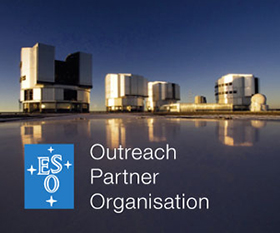Click on project title to expand the project’s details
Planets (Solar System and beyond)
1. Reflectance studies of minerals on Mars
Supervision: Pedro Machado
Language: Portuguese
Maximum number of students: 2
Format: In-person (in Obs. Astronómico Ajuda, Lisbon)
Meetings time: Afternoon
Level of study: Bachelor/Master
Requirements: Basic knowledge of astronomy/astrophysics
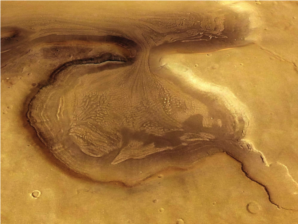
We propose to use OMEGA spectra datasets from Mars Express to detect and characterize specific minerals in old fluvio-marine systems on Mars surface. The methodology proposed is based on the diverse reflectance properties of the minerals we intend to study. Spectroscopic analyses will be implemented on selected datasets. The mineralogic studies will integrate the topographic knowledge of the selected regions, the state-of-the-art information about the atmosphere lower layers and local radiative transfer, and the spectral mineralogic reflectance “finger print”.
2. Deciphering Planetary Atmospheres Through Transit Spectroscopy
Supervision: Eduardo Cristo, William Dethier, Ana Rita Silva
Language: English
Maximum number of students: 6
Format: Online, In-person (in CAUP/FCUP, Porto)
Meetings time: Morning, Afternoon
Level of study: Bachelor/Master
Requirements: Programming, preferably in Python

With over 5000 exoplanets detected today, we have recently started characterization studies to learn more about their atmospheres and interiors. The goal of this project is to probe the atmosphere of an exoplanet using high-resolution spectroscopy. It involves the analysis of exoplanet transit data (transmission spectra) to potentially detect atmospheric signatures.
The project we propose can be divided into four phases. In the first, the student familiarizes themselves with transit observations and derives transmission/absorption spectra from data. The second phase focuses on selecting a suitable synthetic stellar spectra by comparing it to observations using a chi-squared minimization code. The third phase involves simulating in-transit spectra based on the chosen stellar spectrum and comparing them to the results of the first phase. Finally, the student will interpret the results of the planetary absorption signal.
Stars
3. Hands-on Galactic Archaeology and Machine Learning using Synthetic Data
Supervision: Andreas W. Neitzel; Tiago Campante
Language: Portuguese, English
Maximum number of students: 2
Format: Online, In-person (in CAUP/FCUP, Porto)
Meetings time: Morning, Afternoon
Level of study: Bachelor/Master
Requirements: At least 2nd year BSc in Physics or Astronomy competence, experience with Python programming.
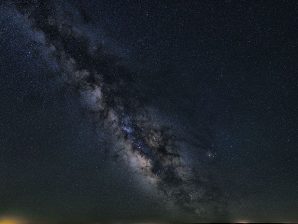
How the Milky Way evolved into its presence state is still a matter of much debate. Understanding the processes that led to the Galaxy’s present state has implications for our understanding of galactic evolution in general, ranging from early universe conditions to feedback processes. Galactic archaeology is the field of astrophysics that aims to uncover the evolutionary and formation history of the Milky Way.
Cosmological zoom-in simulations provide us with synthetic galaxies whose evolutionary history is known. These serve as testing grounds for the application of big data analysis techniques which can help differentiate different phases in the galaxy’s evolution. The student will be given a theoretical introduction to the field of Galactic archaeology and apply machine learning methodologies for data analysis.
Galaxies
4. Exploring the COSMOS with limited coverage surveys and Machine Learning
Supervision: Pedro Cunha, Ana Paulino-Afonso
Language: Portuguese, English
Maximum number of students: 4
Format: Online, In-person (in CAUP, Porto)
Meetings time: Morning
Level of study: Bachelor/Master
Requirements: Knowledge of Python programming. Valued but not mandatory – Numpy, Pandas, Scikit-learn packages.
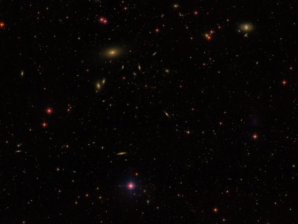
Galaxies are complex systems that contain billions of stars, gas and dust and their physical properties are determined by a variety of factors, including their mass, size, shape and composition. Machine learning algorithms can analyse large amounts of data and identify patterns and correlations that would be more difficult for humans to detect. In this internship, the students will have the opportunity to work with a large photometric dataset of galaxy observations to derive their physical properties, such as stellar mass, star-formation rate, effective radius, and age. The students will assess the impact of lower data availability on the prediction of such properties by masking the original photometric table to match those of much larger galaxy surveys but with lower wavelength coverage, like DES or Euclid. This will allow one to understand the generalisation of models to wavelength-limited surveys and quantify the loss of predictability of such models.
5. LAEs in COSMOS and UDS fields and their morphological features
Supervision: Ana Paulino-Afonso
Language: Portuguese, English
Maximum number of students: 5
Format: Online, In-person (in CAUP, Porto)
Meetings time: Morning
Level of study: Bachelor/Master
Requirements: Knowledge of Python programming. Valued but not mandatory – SExtractor, Galfit, Pysersic, PyAutoGalaxym, or similar tools.
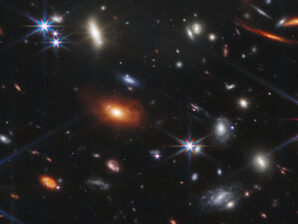
At z>2, Lyman-alpha emitters (LAEs) can be young, star-forming galaxies resembling local, compact, metal-poor star-forming dwarf galaxies. In this project, we will explore the morphological features of LAEs in the COSMOS and UDS fields using the unparalleled imaging capabilities of JWST. By performing both parametric and non-parametric morphological analysis, we aim to understand their structural properties and evolutionary trends.
6. ‘El Gordo’ galaxy cluster through the eyes of HST and JWST
Supervision: Ana Paulino-Afonso
Language: Portuguese, English
Maximum number of students: 5
Format: Online, In-person (in CAUP, Porto)
Meetings time: Morning
Level of study: Bachelor/Master
Requirements: Knowledge of Python programming. Valued but not mandatory – SExtractor, Galfit or similar tools.
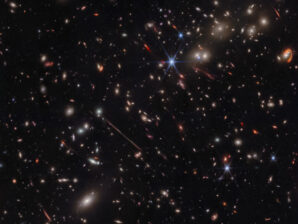
Galaxies are not randomly distributed in the Universe. Due to a gravitational pull, they tend to group themselves and form clusters of galaxies. These clusters are the most massive objects in the Universe and not only allow us to understand the link between dark and baryonic matter but also how galaxies evolve within. “El Gordo” is the most massive, hottest, and luminous X-ray cluster at high redshift (z=0.87). It hosts an excess of blue, bright, and massive early-type galaxies which has been attributed to its merging nature. The mass and state of “El Gordo” promotes a unique environment to study galaxy evolution. By decomposing the light of the galaxies in “El Gordo” we can have the opportunity to try to measure how this cluster state impacts galaxy morphology at high redshift.
7. Diving in the early Universe with Webb
Supervision: Ciro Pappalardo
Language: English
Maximum number of students: 5
Format: In-person (in Obs. Astronómico Ajuda, Lisbon)
Meetings time: Morning, Afternoon
Level of study: Bachelor/Master
Requirements: Knowledge of Python programming. Valued but not mandatory – Knowledge of galaxies’ evolution.
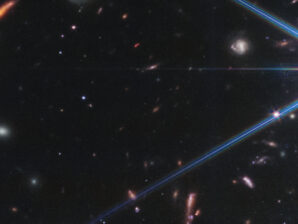
The ultimate goal of modern astrophysics is to build a comprehensive model of galaxy evolution. Despite many notable achievements in the past, we are still far from a self-consistent model describing the diversity of galaxies seen in different epochs. The emission observed combines stars, gas, and materials reprocessed by dust. To fully model this emission, it is fundamental to include all these mechanisms in a common framework. This task is very complicated as the scale of each one of these components can vary dramatically along a galaxy’s life. Our Institute perfected in recent years an innovative tool for interpreting a spectrum combining stellar and nebular emissions, FADO, not the music but an acronym for Fitting Analysis using Differential Optimization Algorithms. First tests, applied to a large sample of nearby galaxies, have shown promising results, allowing the extension of this project towards higher distances.
The goal of this internship is to study such components in a sample of higher redshift galaxies taken from the NIRSPEC instrument onboard the James Webb Space Telescope. Data from this instrument are updated constantly, providing a treasure trove for galaxy evolution studies. With such data and applying FADO, the project will investigate the evolution of stellar and nebular emissions at different galaxy epochs.
8. It takes two to Tango: testing the ‘merging paradigm’ in AGN-host galaxies
Supervision: Pedro Cunha, Ana Paulino-Afonso
Language: Portuguese, English
Maximum number of students: 4
Format: Online, In-person (in CAUP, Porto)
Meetings time: Morning
Level of study: Bachelor/Master
Requirements: Knowledge of Python programming. Valued but not mandatory – Experience with SExtractor, Galfit, Pysersic, PyAutoGalaxy, or similar tools.

Galaxies and active galactic nuclei (AGN) share a symbiotic relationship, capable of reshaping their evolutionary trajectory throughout cosmic history. An AGN consists of a supermassive black hole (SMBH) surrounded by an accretion disc composed of dust and gas. When this material falls into the gravitational field of the SMBH, the accretion process emits a highly energetic signature observable across the electromagnetic spectrum. The AGN unification theory proposes a paradigm where inclination, specifically the line of sight angle, dictates the observed properties of AGN. Among the simplest AGN unification schemes is the classification of sources into two categories based on the orientation of an obscuring dusty torus relative to our line of sight: Type I, known as unobscured AGNs, and Type II, known as obscured AGNs (AGN2). The ‘merging paradigm’ states that the formation of AGN2 is due to the merger of galaxies, allowing dust and gas to fuel the SMBH and the obscuration to be formed. In this project, the students will perform morphological studies using parametric and non-parametric (e.g. CAS, Gini-M20) methods in AGN2 galaxies. This study will allow us to test if galaxy interactions are the dominant trigger for AGN2 and their role in different redshift bins.
9. Supermassive Black Hole growth on galaxies: Linking AGN phases through Cosmic Time
Supervision: Israel Matute, José Afonso, Rodrigo Carvajal, Davi Barbosa, Pedro Martins
Language: English
Maximum number of students: 5
Format: In-person (in Obs. Astronómico Ajuda, Lisbon)
Meetings time: Morning, Afternoon
Level of study: Bachelor
Requirements: Basic Python and basic Statistics. Valued but not mandatory – Machine Learning, galaxies’s evolution, active galactic nuclei.

Astronomers widely accept that supermassive black holes (SMBHs) reside at the cores of most large galaxies, and their growth—observed as Active Galactic Nuclei (AGNs)—profoundly influences the evolution of their galactic hosts. However, traditional spectroscopic methods for directly measuring AGN properties like black hole mass and accretion rate are time-intensive and resource-demanding. This project offers an alternative approach by harnessing the power of machine learning (ML) to unlock AGN secrets on a grand scale.
We will develop and train machine learning models on a vast multi-wavelength dataset, enabling the prediction of crucial AGN parameters and the reliable identification of AGNs using only their photometric signatures. This project will empower students to gain hands-on experience with cutting-edge techniques in both supervised and unsupervised learning, while also mastering the critical skill of quantifying uncertainties in model predictions. By exploring intricate correlations within multi-wavelength data, students will unlock hidden insights into the relationships between these wavelengths and fundamental AGN properties. The results of this project have the potential to significantly advance our understanding of AGN populations, their pivotal role in galaxy evolution, and ultimately, the co-evolutionary dance between SMBHs and their galactic environments. This approach promises to impact how we study AGNs, opening new avenues for research and discovery in astrophysics.
Evolution of the Universe (cosmology)
10. Why is the universe accelerating?
Supervision: Nelson Nunes, Tiago Barreiro, José Mimoso
Language: Portuguese, English
Maximum number of students: 8
Format: In-person (in Ciências ULisboa, Lisbon)
Meetings time: Morning, Afternoon
Level of study: Bachelor
Requirements: Programming in Python and/or Mathematica
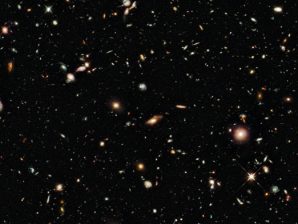
In this project the student will learn how we found out that the Universe is accelerating, and review various analytical and numerical methods that cosmologists use to understand its dynamics.
Astronomy communication
11. Contributions to research in astronomy teaching and communication
Supervision: Ilídio André Costa
Language: Portuguese
Maximum number of students: 2
Format: Online, In-person (in CAUP, Porto)
Meetings time: Afternoon
Level of study: Bachelor/Master
Requirements: none
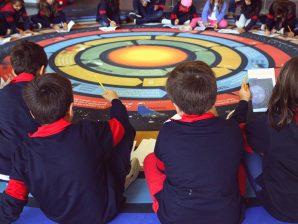
Participants will have the opportunity to carry out exploratory investigative projects in the field of astronomy teaching or communication. The project will involve the processing, analysis and communication of data already collected during IA activities. Elementary statistical analyses will be used in the data processing, such as the creation of tables, graphs and obtention of numerical indicators to present information about the tendency and dispersion of the data using, for example, the average and the standard deviation. The work plan involves 1) the selection of the IA data to work with, 2) data processing/analysis, 3) discussion of the results and conclusions and 4) presentation of the project.

